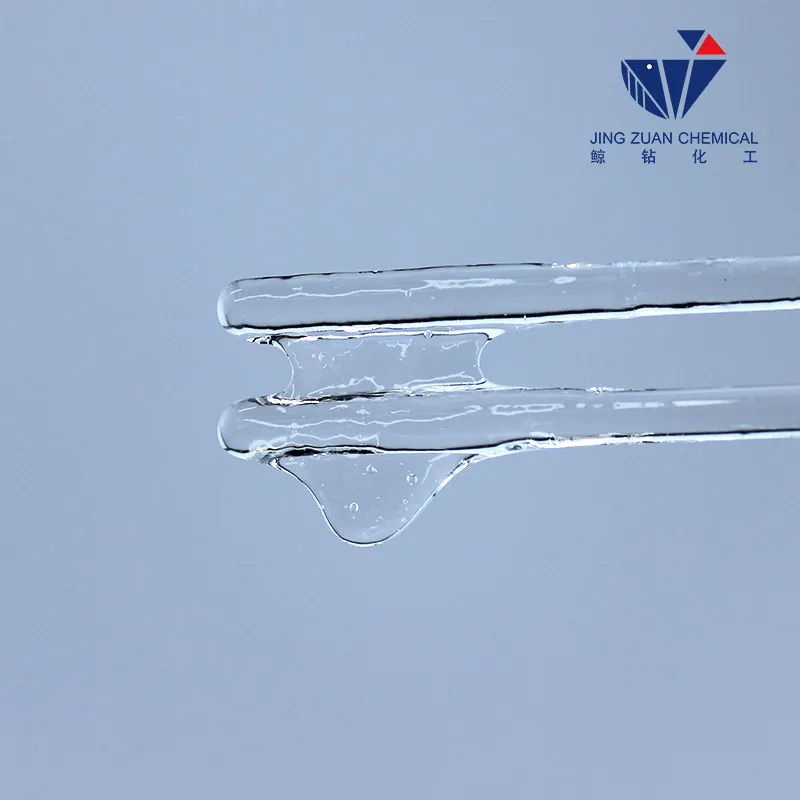
Nov . 29, 2024 13:57 Back to list
Hydroxypropyl Methylcellulose Applications and Benefits in Various Industries
Hydroxypropyl Methylcellulose (HPMC) An Essential Polymer in Modern Applications
Hydroxypropyl methylcellulose (HPMC) is a semi-synthetic polymer derived from cellulose, which is the most abundant organic polymer on Earth. It is recognized for its wide range of applications across various industries, thanks to its unique properties such as biocompatibility, viscosity-modifying capability, and emulsifying characteristics. This article explores the significance of HPMC, its chemical structure, properties, and applications in modern technology.
Chemical Structure and Properties
HPMC is created by modifying cellulose through a series of processes including hydroxypropylation and methylation. The resulting compound is a white, odorless powder that is soluble in water and alcohols but insoluble in organic solvents. The degree of substitution—how many of the hydrogen atoms have been replaced with hydroxypropyl and methyl groups—affects its solubility, viscosity, and gel-forming abilities. HPMC generally has excellent thermal stability and forms clear, viscous solutions, making it suitable for a variety of formulations.
One of the standout characteristics of HPMC is its ability to form gels. This property is particularly useful in pharmaceutical formulations where controlled drug release is desired. Additionally, HPMC acts as a thickening agent, binder, and film-forming agent, making it a versatile ingredient in making various products.
Applications in Pharmaceuticals
In the pharmaceutical industry, HPMC is widely used in the formulation of drug products, including tablets, capsules, and controlled-release formulations. It serves as a binder that ensures the proper adhesion of active ingredients within a tablet, enhancing their integrity and performance. In controlled-release formulations, HPMC moderates the release of the active drug, allowing for sustained therapeutic action over time. Furthermore, its use in hydrophilic matrices for drug delivery enhances the solubility of poorly soluble drugs, leading to improved bioavailability.
hydroxypropyl methylcellulose hpmc

Food Industry Utilization
HPMC's role extends beyond pharmaceuticals into the food industry, where it is used as an additive. As a food-grade ingredient, it acts as a thickener, stabilizer, and emulsifier, improving the texture and stability of various food products. HPMC helps retain moisture in baked goods, provides a creamy texture in sauces and dressings, and enhances the overall palatability of processed foods. Its non-toxic nature and ability to form gels have made it a favored choice among food formulators looking to meet consumer demands for healthier, additive-free products.
Cosmetic and Personal Care Applications
In the realm of cosmetics and personal care, HPMC is commonly found in creams, lotions, and gels. Its film-forming and moisturizing properties contribute to products' longevity and efficacy on skin surfaces. HPMC is also used in hair care products to improve texture and manageability, showcasing its versatility across various personal care applications.
Conclusion
In conclusion, hydroxypropyl methylcellulose (HPMC) is an invaluable polymer with a wide range of applications in pharmaceuticals, food, and personal care industries. Its unique properties, such as gel formation, film forming, and viscosity modification, have made it a crucial ingredient in delivering effective and innovative products. As science and technology continue to evolve, the potential for HPMC applications will likely expand, reinforcing its importance in modern formulations and consumer products. The versatility and effectiveness of HPMC underscore its standing as a critical component in both everyday products and specialized applications.
-
Versatile Hpmc Uses in Different Industries
NewsJun.19,2025
-
Redispersible Powder's Role in Enhancing Durability of Construction Products
NewsJun.19,2025
-
Hydroxyethyl Cellulose Applications Driving Green Industrial Processes
NewsJun.19,2025
-
Exploring Different Redispersible Polymer Powder
NewsJun.19,2025
-
Choosing the Right Mortar Bonding Agent
NewsJun.19,2025
-
Applications and Significance of China Hpmc in Modern Industries
NewsJun.19,2025







